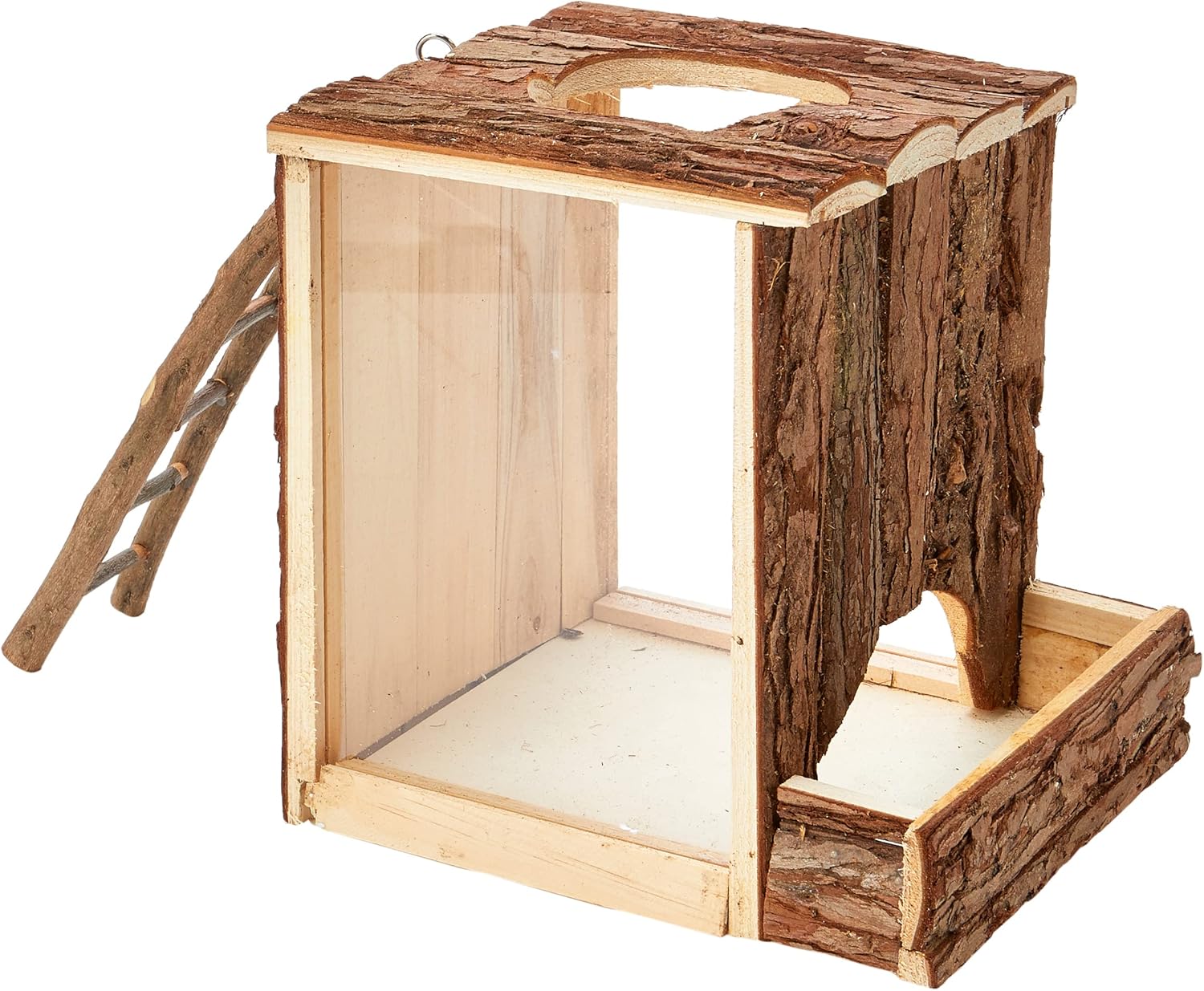About this deal
Your best bet is to add four to seven inches of bedding in the area that’s to be purposed for burrowing and then observe your hamster’s reaction to it. You can easily add more or take some away if you’ve found that this amount is too much or too little. We want substances that will allow enormous igloo/volcano nests to be constructed. That means long strips of bedding rather than short/heavily chopped up fragments. Beri likes using long newspaper strips, hay, and safebed for hamsters. Another good option is toilet paper.
ii) Burying or partially burying cardboard boxes and tubes. This helps get them started with experiencing being under the substrate, as well as being cheap (free!) and easy for humans. This means shredded kitchen paper, hemp shavings, or soft hay mixed with a bedding topper are best for burrowing hamsters. Why Do Hamsters Dig in Corners?
Wood shavings have a bad reputation in rodent keeping, because raw softwood shavings can be dusty and contain chemical compounds that irritate rodents’ sensitive respiratory systems. However, dust extracted aspen wood shavings are safe and can make a good substrate option. Aspen is a hardwood tree so it doesn’t contain potentially harmful aromatic oils that softwood contains. Your best option is to search for an adequate enclosure online or, if you are crafty, to build one yourself. Having a large enough enclosure will allow you to ensure you have the ability to encourage two of your hamster’s natural behaviors: burrowing and climbing. The Journal of Ethology explains how a Syrian hamster in its natural environment will spend just an hour a day above ground, spending the remainder under the sand.
Wild hamsters live in burrows that they develop underground. This is where they feel safe and where they spend the majority of their days. To provide a similar environment for your hamster, you will ideally add a layer of bedding that is 3-6 inches deep, depending on the size of your hamster. This will allow your hamster to create his own tunnels, providing him an outlet for his burrowing instinct. no syrian of mine has ever been fine on a 8" wheel, in fact the only hamster species I'd allow to have an 8" wheel is a roborovski. You need to upgrade that ASAP. Theres no excuse. He's not fine. Worth noting that the hamster heaven is no longer recommended as the base tapers so is actually smaller than the bare minimum of 80x50cm. Bare minimum definition: the smallest you could possibly go before its considered cruel so technically hes not in a suitable environment. Hamsters, especially dwarf hamsters, can take advantage of and enjoy tunnel systems added to their enclosures. These are plastic tunnels, sold in pet stores and online, that come in a variety of colors and shapes.
The Benefits of a Hamster Digging Box
Bringing the outdoors inside simply means providing natural objects for your hamster to explore within the safety of her enclosure. One of the most common problems hamster owners face when their pets burrow is the matter of their hamster becoming “lost.” The word “lost” is in quotations because, much of the time, the hamster will still be in their cage even when their owner hasn’t been able to find them amid the heaps of bedding. It is important to choose a paper bedding that is not dusty, and is unscented. A complementary bedding is cardboard squares or strips. These are heavier than paper, but have a good structure for holding tunnels when combined with paper.
Knowing this, you’re probably wondering how you, as a hamster owner, can help facilitate healthy and happy burrowing for your pet. You might not observe your hamster burrowing much, if at all, and wonder if it’s normal for them to be disinterested in this behavior. You may even wonder if they are burrowing too much, or for any unhealthy reasons. By reading on, you will have all of these questions and more answered. In the wild, hamsters make burrows, climb and walk for miles each day, so their living space needs to be large enough to allow them to behave as naturally as possible. Most hamster cages sold in shops aren’t big enough to even meet a hamster’s most basic needs, so instead, we recommend providing them with a much larger space, such as an extra-large cage, glass tank, or home-made enclosure. Wherever you choose to house your hamster make sure it has the following: Using a mixture of nesting materials is better than just one, as it provides more enrichment for the hamster, allowing them to make decisions and construct more complex structures. Litter
Sectioning off some of the base of the habitat and have it very full at one end. This is easiest to do in a tank, but if you have a barred cage without a deep enough base, it’s possible to fix vinyl flooring or corrugated plastic onto the bars to contain the substrate. Yes, hamsters are burrowing animals. Hamsters burrow in the wild, creating networks of tunnels and caves wherein they sleep and store their food. This is done for a number of reasons, including warmth and protection for the poor-sighted creatures from predators. Having a hamster in a domestic setting does not strip them of this natural burrowing impulse. Many hamsters will do this when and where they can, including inside their cage.
 Great Deal
Great Deal 